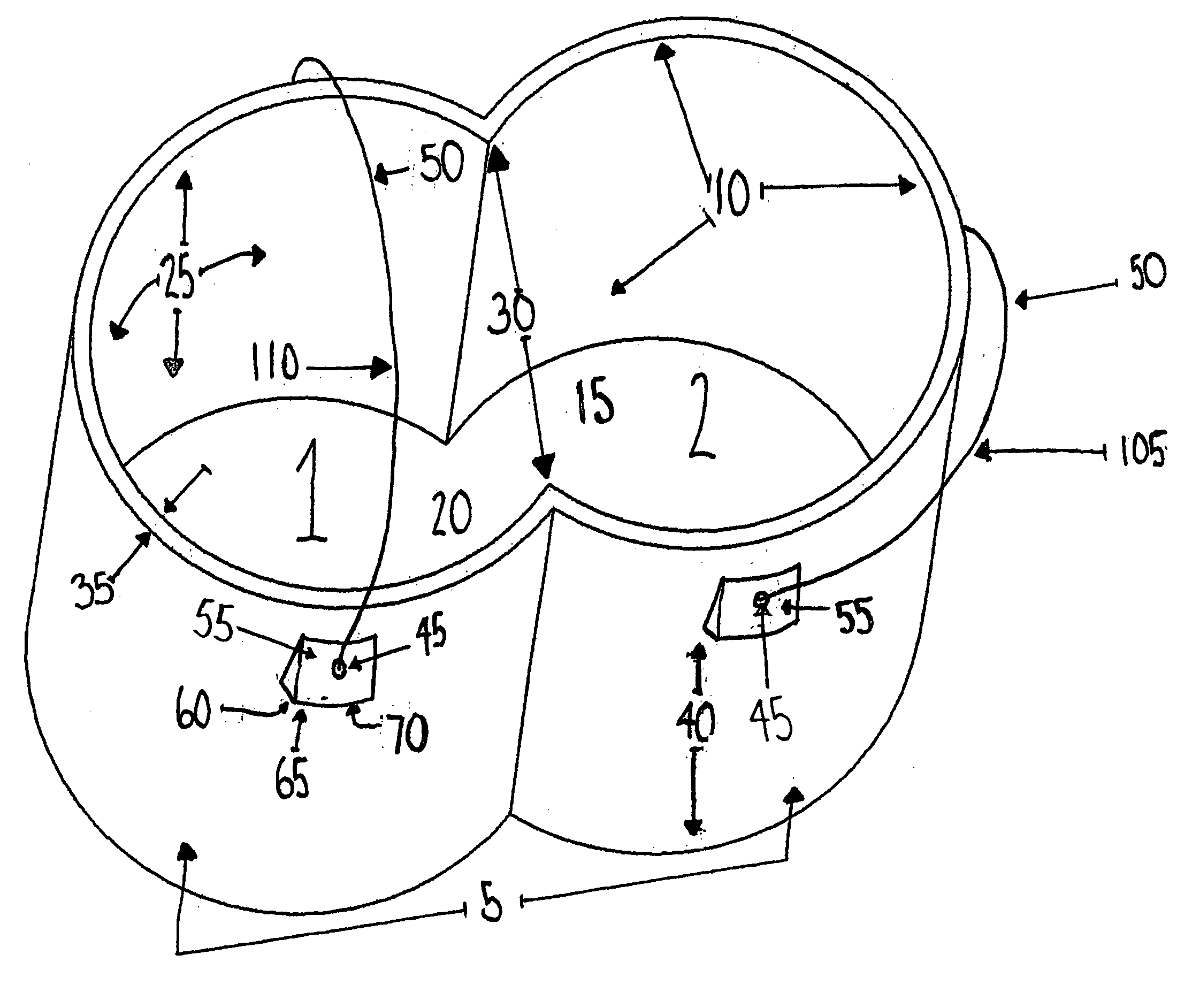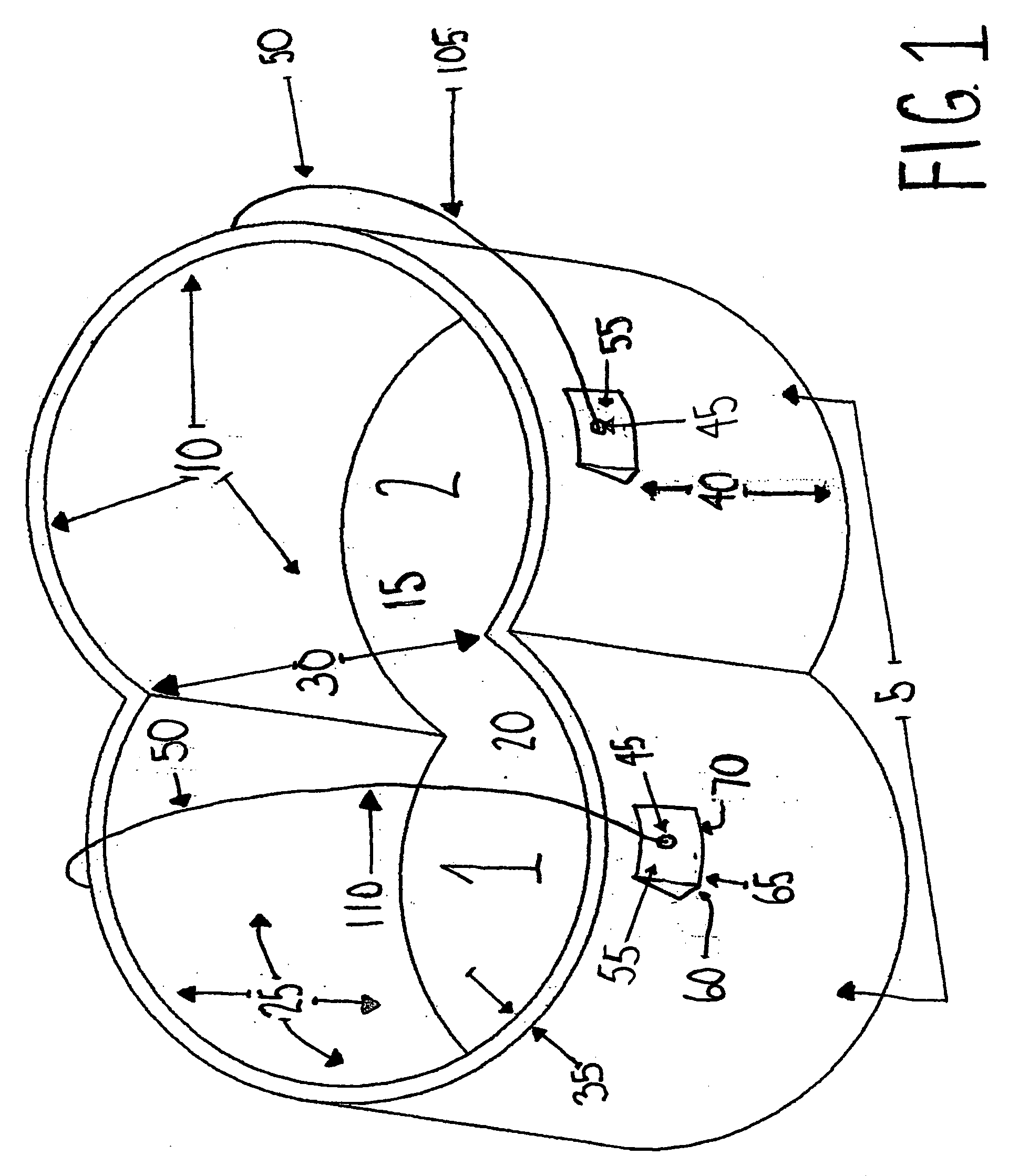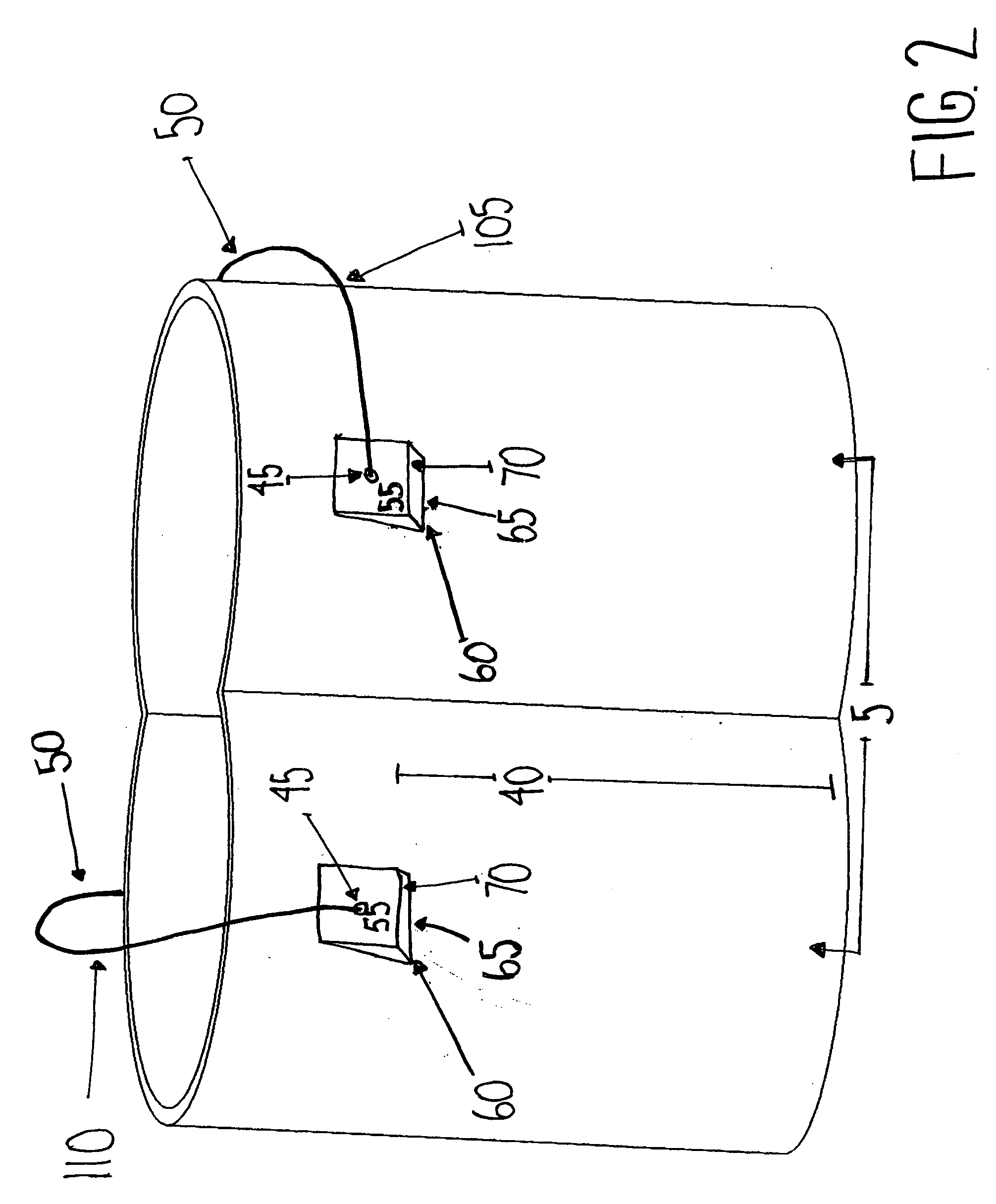All prior art methods and tasks are associated for or designed around a one-
reservoir system such as containers, cans or five gallon buckets comprising of only one reservoir therefore limiting options and tasks.
When you refill the pump is in the way and, even with a slow pour that is hard on the user, there is a chance of spilling liquid or material on the pump.
Pump / sprayers are susceptible to clogging due to small and large apertures such as
dirt, not disbursed
pigment, undissolved mix or resin and need to be filtered immediately prior to use.
The problem associated with this method is that before you can use the liquid or material for
disbursement, you have to filter all the containers separately and then continuously ring out and remove the straining screen for each container.
The problem associated with this method is that liquid or material dropping through the screen mesh is very slow.
After the first use and before the second use, in most cases, the plurality of holes in the screen start to clog from air-dried liquid or material because it is suspended at the top of the container.
A lot of users don't filter liquid or material before use because it is just too inefficient,
time consuming, and messy.
In the long run, the pumps
wear out prematurely because impurities tear up the packing and the
piston, which is a costly repair.
The conventional way of using a one-reservoir
system of supplying a pump /
sprayer with filtered liquid or material is inefficient, messy, and
time consuming.
Refilling half as much on the overall job is half as likely to run the pump / sprayer out of supply, which causes severe wear on packings and the
piston.
With all liquid or material, not blending properly will end up with an inconsistent, inferior product that is not uniform.
It is extremely inefficient each time liquid or material is poured back and forth between containers because of spillages, physical labor, labor time, getting material on persons, surrounding objects and the floor.
The problem associated with a non-detachable divider is not being able to remove it for stacking and shipping.
Specialty containers, cans, and buckets when shipped commonly take up a lot of volume, which is a costly freight charge, and when put on display or stored take up a lot of room.
Specialty containers typically cannot be stacked to reduce the space used due to
specialty interior structures.
Another problem associated with a non-detachable divider is not being able to remove and clean it making
reusability and further uses limited.
Also a problem associated with most detachable dividers is liquid or material escaping between the body and the divider.
The
common method to supply tools, accessories, and screens with liquid or material is to use a one-reservoir system such as a container or a five gallon bucket, filtering and blending liquid or material separately before use, and also being limited to the volume of one reservoir.
There is a further concern if the multi-use two-reservoir bucket is filled with material that is toxic or irritating to the
skin and is used in or around a
residence where
small children are present, since their
curiosity may cause them to remove a fit cover to view the contents of the multi-use two-reservoir bucket.
Government regulations and industry requirements demand the use of a reusable fit cover that is adapted to make a substantially leak-proof fit with a container and is difficult for children to remove, either accidentally or purposely.
For instance, if using a liquid or material like muriatic, hydrochloric,
sulfuric acid or latex paint, you would not want to use
metal as the integral,
structural material because of chemically incompatible problems.
 Login to View More
Login to View More 


